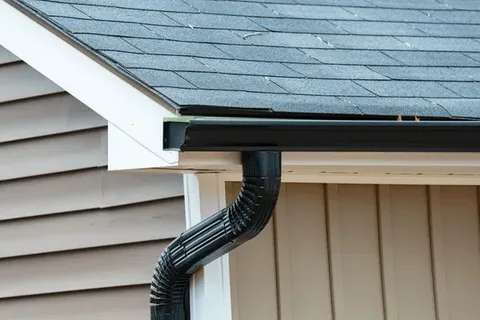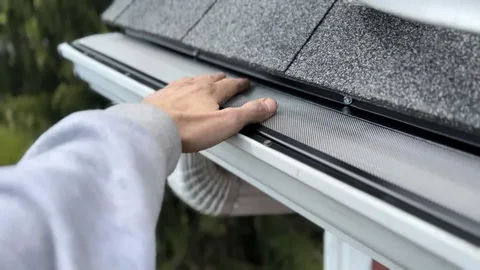The beauty of a winter wonderland often comes with a hidden cost for homeowners—snow and ice can have a significant impact on the structural integrity of your roof. As the temperature drops, the accumulation of snow and the formation of ice dams pose potential risks that can lead to costly damages if not addressed promptly.
In this article, we’ll delve into the ways in which snow and ice affect your roof and provide practical solutions for homeowners to mitigate these risks.
Understanding the Impact of Snow
-
Snow Load:
Snow accumulation on your roof, commonly referred to as the “snow load,” can exert substantial pressure on the structure. The weight of snow varies depending on its density, moisture content, and the duration of accumulation. Heavy, wet snow is more burdensome than light, fluffy snow, and the longer it stays on the roof, the greater the load becomes.
-
Structural Stress:
The excess weight from snow can lead to structural stress, compromising the integrity of your roof over time. This stress can manifest as sagging, which, if left unaddressed, may result in more severe issues such as roof collapse. The risk is particularly high for older homes with roofs that may already be weakened by wear and tear.
-
Ice Dams:
While snow is a common culprit, ice dams pose another set of challenges. These occur when heat from the interior of a home escapes to the roof, causing the snow on the upper portion to melt. As the melted water runs down the roof and reaches the colder eaves, it refreezes, forming a dam. Subsequent melting water can then be trapped behind this dam, seeping into the roof and causing leaks.
Understanding the Impact of Ice
-
Formation of Ice Dams:
Ice dams not only lead to leaks but also contribute to the deterioration of your roof over time. As water seeps into cracks and crevices, it expands upon freezing, creating additional stress on the roof structure. This cyclical process can weaken the roof’s materials and lead to potential vulnerabilities.
-
Gutter Damage:
Gutters play a crucial role in directing water away from your home. However, during winter, they can become clogged with ice, preventing the proper drainage of melting snow. The weight of the ice in the gutters can lead to sagging and even detachment from the roofline, causing damage to both the gutters and the roof.
Solutions for Snow and Ice Issues
-
Regular Roof Inspections:
Prevention is key when it comes to protecting your roof from the impact of snow and ice. Schedule regular roof inspections to identify and address any potential issues before they escalate. Look for signs of stress, sagging, or visible damage, and promptly address them to maintain the structural integrity of your roof.
-
Snow Removal:
Safely removing excess snow from your roof is a proactive measure to prevent the accumulation of a heavy snow load. However, it’s essential to exercise caution to avoid personal injury or damage to the roof. Consider using a roof rake or hiring professionals experienced in safe snow removal techniques.
-
Insulation and Ventilation:
Improve insulation in your attic to minimize heat loss, which is a primary contributor to the formation of ice dams. Proper ventilation helps maintain a consistent roof temperature, reducing the likelihood of snow melting and refreezing at the eaves. This combined approach can significantly mitigate the risk of ice dam formation.
-
Ice Dam Prevention:
Install heat cables along the roof edges to melt snow and prevent the formation of ice dams. These cables are designed to provide a continuous path for melting water, minimizing the risk of dams forming. Properly installed and regulated, heat cables can be an effective solution for preventing ice-related issues.
-
Gutter Maintenance:
Keep gutters free of debris and ice to ensure proper water drainage. Consider installing gutter guards to prevent the buildup of leaves and other debris that could contribute to clogs. Additionally, use calcium chloride or a similar ice melt product to prevent the formation of ice in the gutters.
-
Roof Reinforcement:
In regions prone to heavy snowfall, consider reinforcing your roof structure to withstand higher snow loads. Consult with a structural engineer or roofing professional to assess your home’s specific needs and implement appropriate reinforcements.
Emergency Preparedness
Despite your best efforts, unexpected weather events may still occur. It’s essential to be prepared for emergencies, such as heavy snowfall or sudden ice accumulation. Have a plan in place for quick snow removal or ice dam intervention, and keep necessary tools and materials, like roof rakes and ice melt, readily available. Being proactive during extreme weather conditions can help prevent severe damage to your roof.
Professional Roof Assistance
When in doubt or if you are unable to address snow and ice issues on your own, seek professional assistance. Roofing professionals have the expertise and equipment to safely assess and manage snow and ice-related problems. From structural assessments to targeted snow removal techniques, their assistance can be invaluable in maintaining the health of your roof.
Winter Weather Monitoring
Stay informed about upcoming weather conditions, especially during winter months. Knowing when heavy snow or freezing rain is forecasted allows you to take preemptive measures. If significant snowfall is expected, consider removing some snow from your roof beforehand to prevent excessive accumulation.
Homeowner Education
Educate yourself about the specific needs of your roof based on its material, age, and location. Different roofing materials respond differently to snow and ice, and understanding these nuances can help you tailor your maintenance efforts. Attend workshops or seek advice from local experts to enhance your knowledge and make informed decisions about protecting your roof.
Regular Gutter Checks
Perform routine checks on your gutters to ensure they remain free of debris. Regularly clean them, especially during fall, to prevent leaves and branches from accumulating and causing blockages. By maintaining clear gutters, you facilitate proper water flow, reducing the risk of ice dams and gutter-related issues.
Snow Retention Systems
Consider installing snow retention systems on your roof to control the release of snow and prevent sudden avalanches. These systems, such as snow guards or fences, can be strategically placed to break up the snow into smaller, manageable sections, reducing the risk of damage to your property or anyone below.
Timely Repairs
Address any identified issues promptly. If you notice signs of damage, such as water stains on your ceiling or visible deterioration of roofing materials, act quickly. Timely repairs can prevent minor problems from escalating into major issues that require extensive and expensive interventions.
Conclusion
As a responsible homeowner, safeguarding your roof from the impacts of snow and ice involves a combination of proactive measures, regular maintenance, and strategic interventions. By staying informed, investing in preventive strategies, and seeking professional assistance when needed, you can fortify your roof against winter challenges. Remember that each home is unique, and understanding the specific vulnerabilities of your roof will empower you to implement the most effective solutions.




